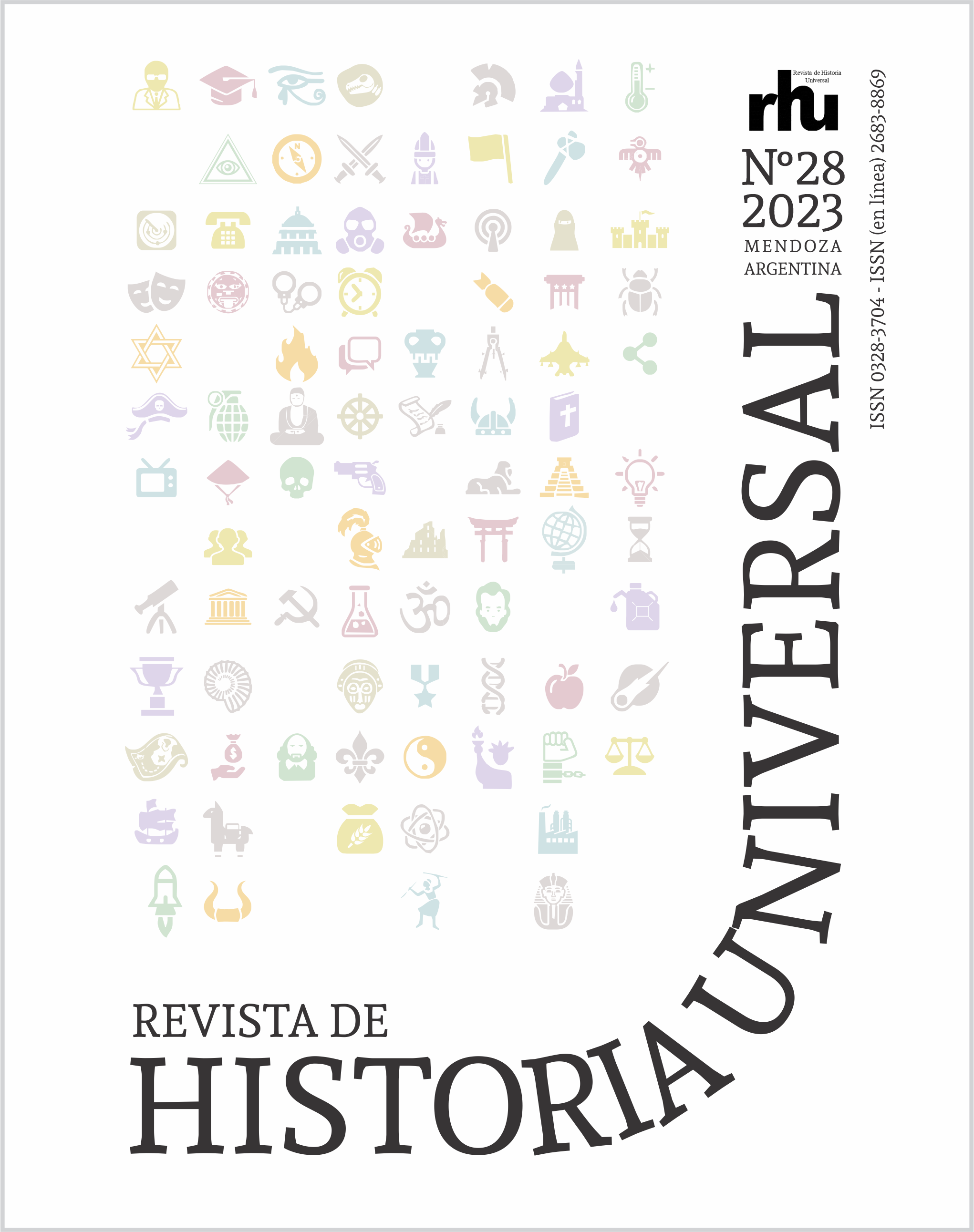The Conversion of Volusianus: Icon of the Change of an Era
Keywords:
Volusianus, Melania the Younger, Augustine, conversion, change of eraAbstract
The objective of this work was to reconstruct the history of the conversion of the Roman senator Volusianus (ca. 382-437). For which we proceeded to analyze the data provided by Rutilio Namaciano in his work De reditu suo; the correspondence of our character with Saint Augustine, and the elements provided by the Life of Melania the Younger, Volusiano's niece. The interpretation of the data allowed us to notice that, for Volusiano, his conversion was a matter of conscience and existential commitment (since he had to abandon his previous behavior), a question that had to be illuminated from intelligence (as expressed in his questions to Augustine ) and a matter of political implications (as he perceives it from his place as a public man). Volusiano's path to its end, the acceptance of faith, is revealed to us as a singular image or icon of a process that also occurred on a social level: the progressive extinction of the traditional religion of Rome and the predominance of Christianity.
References
Blázquez Martínez, J. M. (2006). Problemas económicos y sociales en la Vida de Melania, la Joven y en la Historia Lausiaca de Paladio. Biblioteca Virtual Miguel de Cervantes. https://www.cervantesvirtual.com/obra/problemas-econmicos-y-sociales-en-la-vida-de-melania-la-joven-y-en-la-historia-lausiaca-de-palladio-0/
Boch, V. (2019). Claudio Rutilio Namaciano y sus contemporáneos: ideas diferentes en una época de crisis. En S. Argüello, V. Boch, y P. Cardozo (Eds.). La Antigüedad Tardía y el origen de la Europa Feudal (pp. 51-73). Editorial de la Facultad de Filosofía y Letras de la Universidad Nacional de Cuyo.
Boch, V. (2021). Rufius Antonius Agrypinus Volusianus: entre la incertidumbre y el cambio. En F. Gómez Espelosín y J. Gómez de Caso Uriaga, (Eds.). Historia sin fronteras. En torno a las raíces de Europa (pp. 143-165). Editorial Universidad de Alcalá de Henares – Editorial Universidad de Sevilla.
Cameron, A. (2016). Were pagans afraid to speak their minds in a Christian world? The Correspondence of Symmachus. En M. Salzman, M. Saghy y R. Lizzi Testa, R. (Eds.). Pagans and Christians in Late Antique Rome. Conflict, Competition and Coexistence in the Fourth Century (pp. 64-111). Cambridge University Press.
Carrasón Torontegui, O. (2019). La Vita latina Sanctae Melaniae Iunioris de Geroncio y su lectura: la difusión de un modelo femenino. Universidad del País Vasco.
Chastagnol, A. (1956). Le sénateur Volusien et la conversion d’une famille de la aristocratie romaine au Bas Empire. Révue de Études Anciennes, 58, 241-253.
Geroncio (1962). Vie de Sainte Mélanie. (D. Gorce, Traducción el texto griego, introducción y notas). Les Editions du Cerf.
Geroncio (1984). The Life of Melania the Younger. (E. Clark, Traducción, introducción y notas). The Edwin Mellen Press.
Jones, A., Martindale, J. y Morris, J. (1971). The Prosopography of the Later Roman Empire. (Vol. I. A.D. 260-395). Cambridge University Press.
Lagouanère, J. (2017). Uses and meanings of ‘paganus’ in the Works of St. Augustine. En M. Saghy y E. Schoolman (Eds.). Pagans and Christians in the Late Roman Empire. New evidences, new approaches (4th - 8th centuries) (105-118.). Department of Mediaeval Studies. CEU. Central European University Press. University of Pécs.
Martindale, J. (1980). The Prosopography of the Later Roman Empire. Vol. II: A.D. 395-527. Cambridge University Press.
San Agustín (1950; 1953). Obras Completas, tomos VII; XI. B.A.C (edición bilingüe).
San Agustín-b, Cartas. En Obras completas. https://www.augustinus.it/spagnolo/ lettere/index2.htm
Salzman, M., Saghy, M. y Lizzi Testa, R. (Eds.) (2016). Pagans and Christians in Late Antique Rome. Conflict, Competition and Coexistence in the Fourth Century. Cambridge University Press.
Downloads
Published
How to Cite
Issue
Section
License

This work is licensed under a Creative Commons Attribution-NonCommercial-ShareAlike 4.0 International License.







